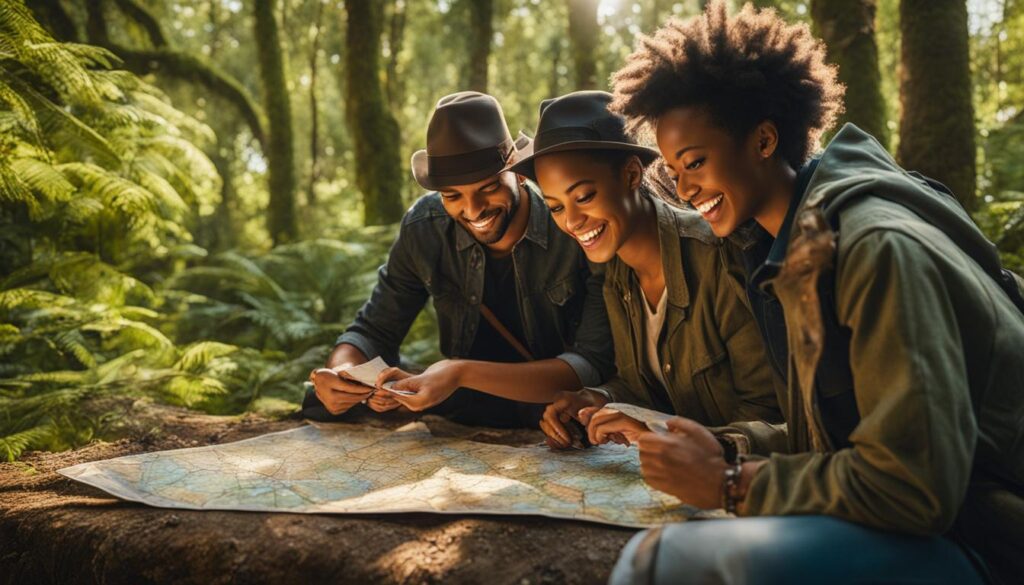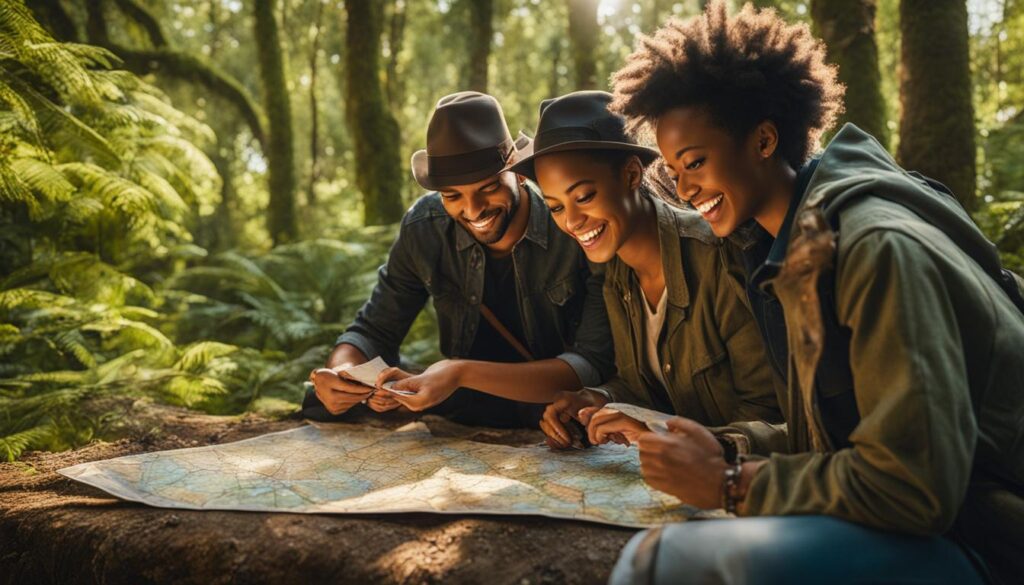We may earn money or products from the companies mentioned in this post.
Organizing school tours can be a daunting task, but it’s a valuable investment in student learning and growth. Efficient school tour arrangements can make educational visits fun, engaging, and memorable. Educational tours offer an opportunity to explore new places, learn firsthand about different cultures, and build social skills.
The benefits of well-organized educational tours are endless. They can broaden student horizons, enhance critical thinking skills, and promote teamwork. A successful school tour requires careful planning, attention to detail, and a focus on safety.
Whether it’s a local museum trip or an overseas adventure, school tour arrangements play a crucial role in shaping the experience for both students and educators.
Key Takeaways
- School tours are valuable investments in student learning and growth
- Efficient school tour arrangements can make educational visits fun, engaging, and memorable
- Well-organized educational tours can broaden student horizons, enhance critical thinking skills, and promote teamwork
- Successful school tours require careful planning, attention to detail, and a focus on safety
- School tour arrangements play a crucial role in shaping the experience for both students and educators
Seamless School Tour Planning: A Step-by-Step Guide
Organizing school trips can be a daunting task, but with proper tour planning, it can become a stress-free experience. A well-planned educational tour not only enhances student learning but also provides them with the opportunity to learn about different cultures and environments. Here is a step-by-step guide to help schools organize seamless school tours:
-
Choose the Destination
The first step in organizing a school tour is to choose a destination. The destination should be educational and engaging, and align with the curriculum. Schools can choose from local historical sites, museums, nature reserves, or even international destinations. Once the destination is chosen, research the location for educational sites and attractions.
-
Estimate the Cost
Once the destination is chosen, estimate the cost of the tour. Consider the costs of transportation, accommodation, food, and entrance fees to attractions. When estimating the cost, be realistic and considerate of the families’ financial situations.
-
Recruit Chaperones
Recruit chaperones for the school tour. Chaperones play a vital role in ensuring the safety and well-being of the students. Ask for volunteers or consider hiring professional chaperones. Ensure that chaperones undergo background checks and are trained in emergency procedures and tour logistics.
-
Arrange Transportation
Once the destination, cost, and chaperones are secured, arrange transportation. Research bus companies or airlines and request quotes. Consider safety when choosing transportation and select reputable companies with a history of safe travel.
-
Book Accommodations
Book appropriate accommodations for the students and chaperones. Consider amenities, location, and safety features when choosing accommodations. Book accommodations near the educational sites and attractions to minimize travel time.
-
Organize Itinerary
Once everything is booked, organize the itinerary. Create a detailed schedule that includes travel time, educational sites, and activities. Ensure there is ample time for breaks and meals. Share the itinerary with the chaperones and students to keep everyone informed and on schedule.
By following this guide, schools can organize seamless and engaging school tours that will enhance student learning and create lifelong memories.
Guided School Tours: Enhancing Learning Outcomes
Guided school tours provide an exceptional opportunity for students to learn and engage with the world around them. With knowledgeable and experienced tour guides, students can gain a greater understanding of the history, culture, and significance of the places they are visiting.
Unlike self-guided tours, guided tours allow students to interact with the environment in a more immersive and meaningful way. Tour guides can provide in-depth knowledge and context, enabling students to make important connections between what they are learning in the classroom and the real world. They can also facilitate interactive activities that enhance the learning experience and increase engagement.
Research has shown that guided school tours can have a significant impact on student learning outcomes. Students who participate in guided tours demonstrate greater retention of information, improved critical thinking skills, and increased cultural awareness.
“A guided tour is like a living history lesson. It allows students to see, hear, and touch the world around them, making learning come to life.”
By selecting experienced and knowledgeable tour guides, schools can ensure that their students receive the optimal learning experience during their educational tours. A qualified guide can help to bring the curriculum to life, providing a unique and engaging perspective that cannot be found in textbooks or online resources.
Engaging Activities: Making School Excursions Memorable
When it comes to planning school excursions, incorporating engaging activities can make all the difference in creating a memorable experience for students. From hands-on workshops to cultural experiences, offering a variety of interactive activities can keep students engaged and interested in the educational tour.
Hands-On Workshops
One of the best ways to engage students during a school excursion is to offer hands-on workshops. These workshops can range from science experiments to art projects, and they allow students to actively participate in the learning process. Hands-on workshops not only provide an opportunity for students to learn new skills but also encourages team building and creativity.
Interactive Demonstrations
Interactive demonstrations are another effective way to keep students engaged during school excursions. Rather than passively observing a presentation or lecture, students can actively participate in the learning process through interactive demonstrations. For example, during a science museum visit, students can participate in a live science demonstration, allowing them to engage with the material in a more meaningful way.
Cultural Experiences
Offering cultural experiences during a school excursion provides a unique opportunity for students to learn about different cultures and communities. These experiences can include visiting art galleries, music performances, or cultural festivals. By exposing students to new cultures, they develop a broader perspective and understanding of the world around them.
It is important to note that while engaging activities can enhance the educational tour experience, it is crucial to strike a balance between education and entertainment. Incorporating too many entertainment-focused activities can distract from the educational goals of the excursion. Therefore, it is important to carefully select activities that align with the educational objectives of the tour.
School Tour Safety: Prioritizing Student Well-being
School tours are a perfect opportunity for students to learn outside the classroom. However, organizing school trips comes with a responsibility to prioritize student safety and well-being throughout the duration of the tour. Implementing safety measures can prevent accidents and ensure that the tour is a fun and memorable experience for all.
Risk Assessment
Prior to organizing a school tour, conduct a thorough risk assessment to identify any potential hazards. This process should include an evaluation of the destination, transportation, accommodations, and activities. Risks that are identified should be addressed and measures taken to minimize them.
Transportation Safety
When it comes to school tours, transportation safety is paramount. Ensure that the mode of transport is appropriate for the size of the group, the distance of the journey, and the expertise of the driver. Drivers should have the necessary licenses and experience, and the vehicle should be regularly serviced and maintained. In addition, students should wear seatbelts at all times during the journey.
Emergency Preparedness
Schools should prepare for any emergencies that may arise during the tour. This includes having a first aid kit on hand, knowing the location of the nearest medical facility, and having emergency contact details for parents or guardians. In addition, students should be briefed on emergency protocols and what to do in case of an emergency.
Travel Insurance
It is advisable to purchase travel insurance for all participants of the school tour. This can provide coverage for any unforeseen circumstances such as medical emergencies, cancellations, or lost luggage. Make sure to choose a reputable insurance provider and read the policy thoroughly to understand the coverage.
Conclusion
Efficient school tour arrangements are crucial in making educational visits fun and impactful for students. By prioritizing safety, planning well-organized tours, providing guided experiences and incorporating engaging activities, schools can create enriching educational tours that will leave a lasting impact on students’ learning and personal development.
Whether it’s organizing transportation and accommodations, choosing destinations and attractions, or selecting experienced and knowledgeable guides, proper planning is key to creating a seamless tour experience. By following a step-by-step guide, schools can ensure every aspect of the tour is well-coordinated.
Guided Tours
Guided tours play a significant role in enhancing learning outcomes. Professional tour guides provide students with in-depth knowledge, context, and interactive activities that make the learning experience more engaging and enjoyable. Schools should prioritize selecting experienced and knowledgeable guides for optimal learning outcomes.
Engaging Activities
Engaging activities are essential in making school excursions memorable. Hands-on workshops, interactive demonstrations, and cultural experiences can all be incorporated into educational tours to provide a balance of education and entertainment. By including engaging activities, schools can create a truly impactful experience for their students.
Safety Measures
Safety is always a top priority when organizing school tours. Schools should consider essential safety measures such as risk assessments, transportation safety, and emergency preparedness to ensure the well-being of their students throughout the tour.
In summary, well-planned and organized school tours can make a huge difference in student learning and personal development. By prioritizing safety, guided experiences, engaging activities, and efficient planning, schools can provide students with enriching educational tours that will leave a lasting impact.
Thank you for taking the time to read about School Tour Arrangements and how they can improve school tours.
FAQ
What are the benefits of efficient school tour arrangements?
Efficient school tour arrangements can make educational visits fun and engaging. They allow for smooth coordination, ensuring that students get the most out of their learning experience. Well-organized tours also help students stay focused and engaged, leading to better retention of knowledge.
How can schools plan a seamless school tour?
Planning a seamless school tour involves several steps. Schools should start by choosing suitable destinations and attractions that align with their educational objectives. They should then carefully arrange transportation and accommodations, ensuring all logistical details are taken care of. By following a step-by-step guide, schools can ensure a well-coordinated and enjoyable tour for their students.
What are the benefits of guided school tours?
Guided school tours offer several advantages. Professional tour guides provide in-depth knowledge, context, and interactive activities that enhance the learning experience. They can answer students’ questions and provide additional insights, making the tour more engaging and informative.
How can schools make school excursions memorable?
Engaging activities play a vital role in making school excursions memorable. Schools can incorporate hands-on workshops, interactive demonstrations, and cultural experiences into their tours. By balancing education and entertainment, schools can create impactful experiences that leave a lasting impression on students.
What safety measures should schools prioritize during school tours?
Safety should always be a top priority during school tours. Schools should conduct thorough risk assessments, ensure transportation safety, and have emergency preparedness plans in place. By prioritizing student well-being and implementing practical safety measures, schools can ensure a safe and secure tour experience.
Affiliate Disclosure: This post may contain affiliate links. If you purchase through our link, we may receive a small commission, but at no additional cost to you. For more information, please see our Disclosure statement.



